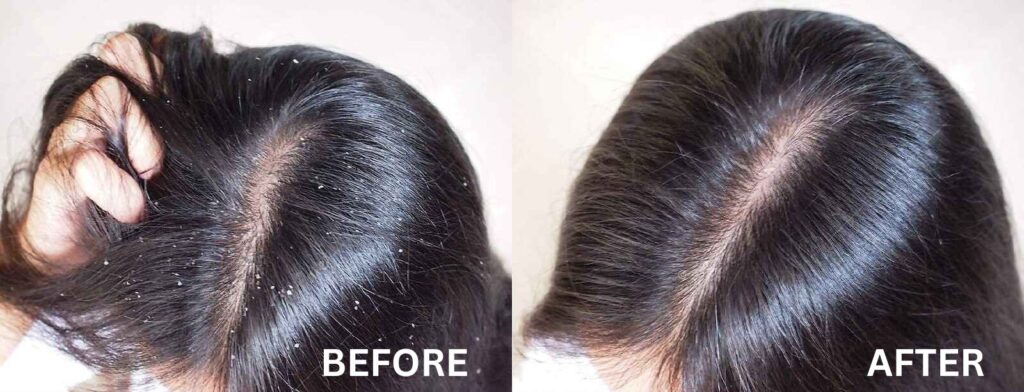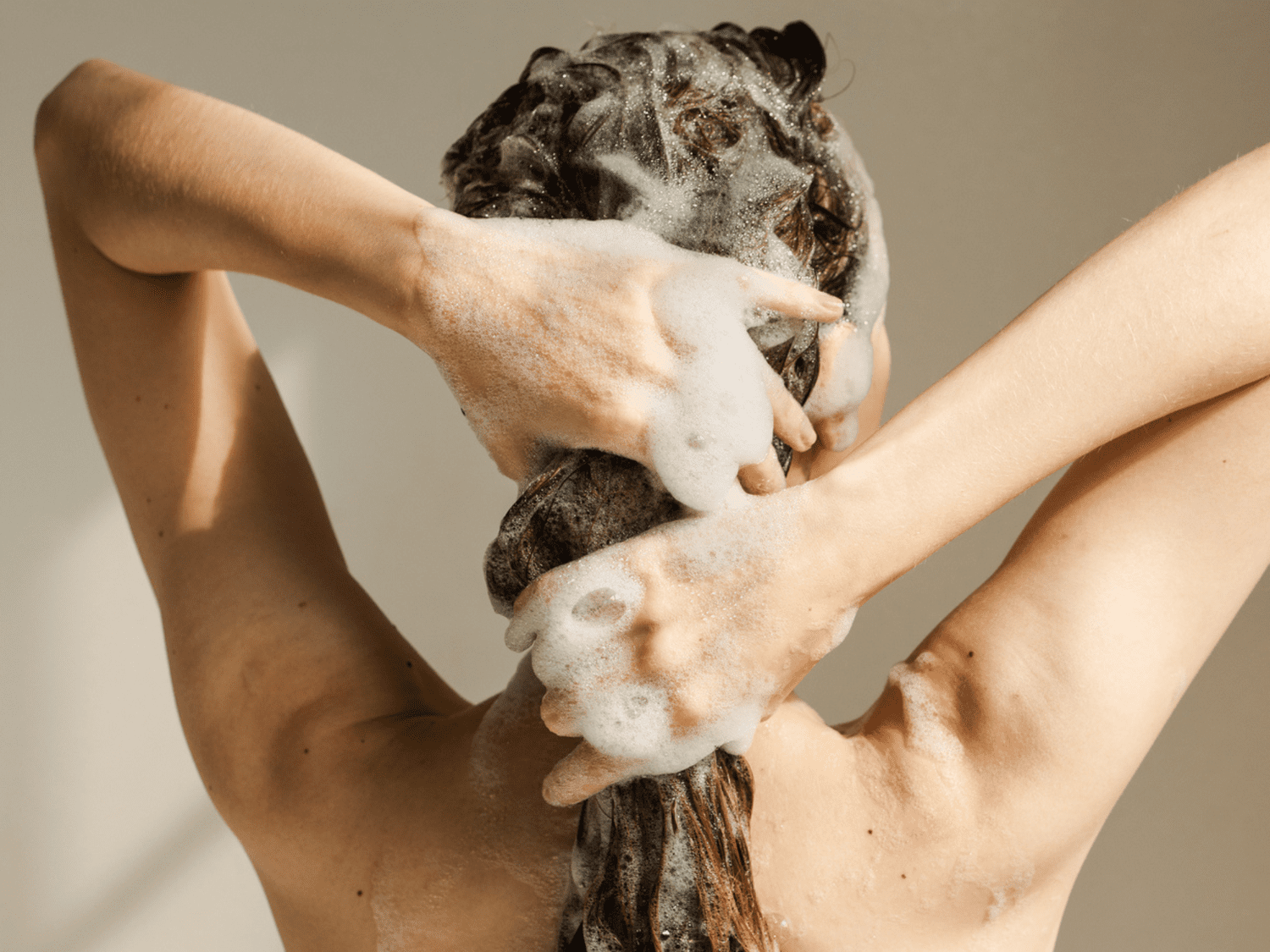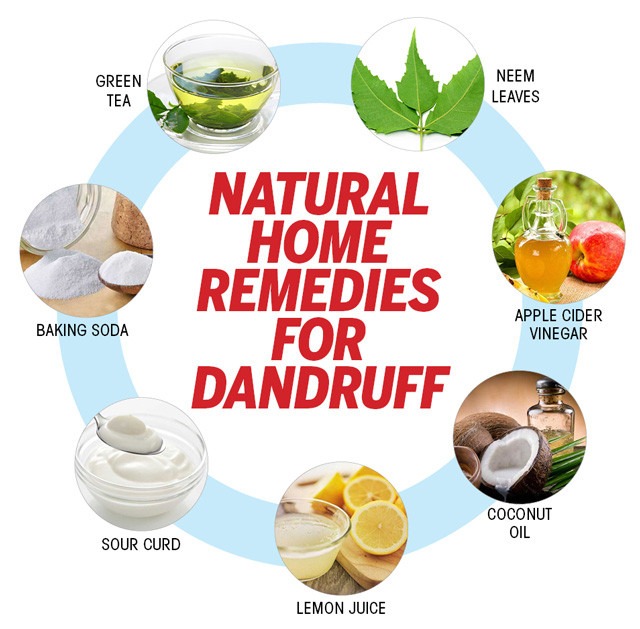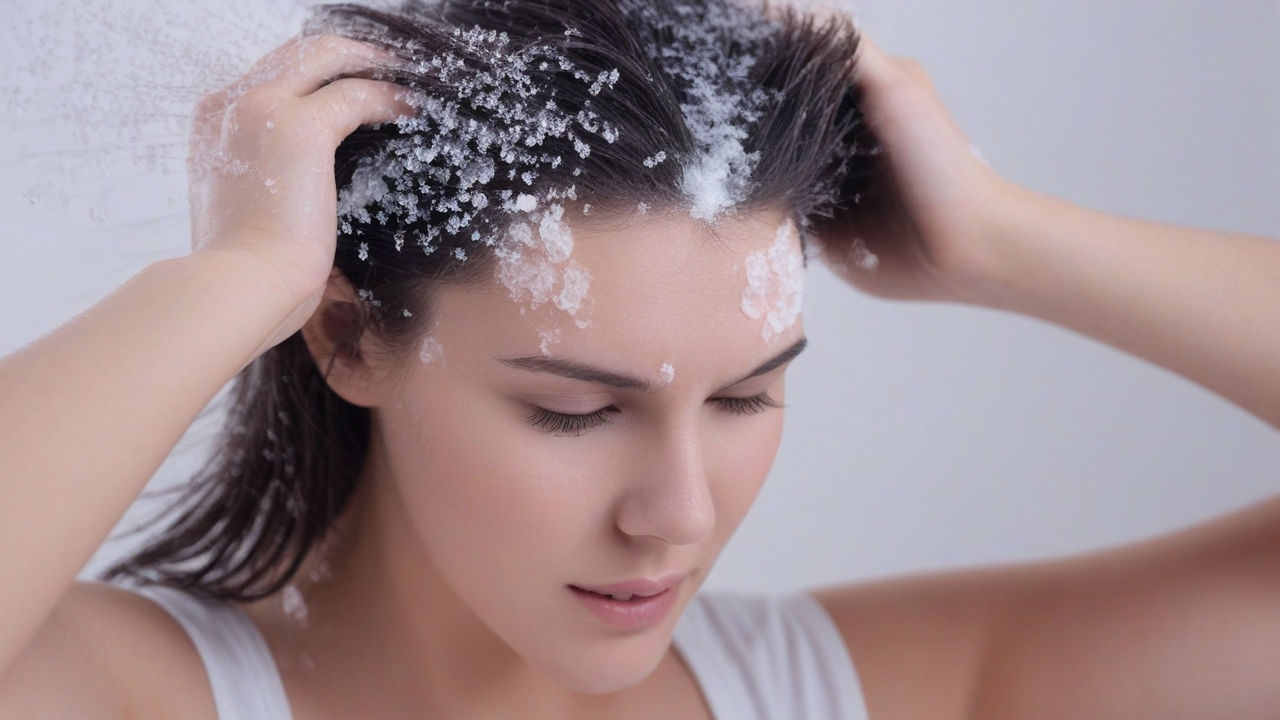Understanding and Treating Dandruff: A Comprehensive Guide

Did you know that nearly half of the global population experiences dandruff at some point in their lives? This common scalp condition, often characterized by flaky skin and itching, can affect anyone regardless of age or gender. Despite its prevalence, dandruff remains a source of embarrassment and discomfort for many.
The good news is that a flake-free future is entirely achievable. There are numerous treatments available, ranging from over-the-counter shampoos and prescription medications to natural remedies and lifestyle adjustments. Whether you’re dealing with mild flakes or severe scaling, there’s a solution tailored to your needs. In this guide, we’ll explore the various treatments for dandruff, helping you find the most effective methods to achieve a healthy, flake-free scalp.
Understanding Dandruff

What is Dandruff?
Dandruff is a chronic scalp condition marked by the shedding of dead skin cells, resulting in visible flakes. These flakes can vary in size and are often accompanied by itching and irritation. While dandruff is not contagious or serious, it can be persistent and uncomfortable.
Definition and Symptoms
Dandruff manifests as white or grayish flakes of dead skin that accumulate on the scalp and in the hair. Symptoms include an itchy scalp, dryness, and in some cases, redness and irritation. The severity of dandruff can range from mild, with minimal flaking, to severe, where the flakes are large and noticeable.
Common Causes and Triggers
Several factors contribute to the development of dandruff. One of the most common causes is seborrheic dermatitis, a condition that affects areas rich in oil glands, including the scalp. Other triggers include:
- Dry Skin: Especially prevalent in winter, leading to smaller, less oily flakes.
- Malassezia Yeast: This fungus naturally lives on the scalp but can sometimes grow out of control, causing irritation and excessive skin shedding.
- Sensitivity to Hair Products: Certain shampoos, conditioners, and styling products can irritate the scalp, leading to dandruff.
- Infrequent Shampooing: Not washing your hair regularly can allow oils and skin cells to build up, causing dandruff.
Who Gets Dandruff?
Dandruff can affect anyone, but certain factors increase the likelihood of developing this condition. It’s more common in men than women, possibly due to larger oil-producing glands on the male scalp. Additionally, dandruff often begins in young adulthood and persists through middle age, though older adults can also be affected.
Demographics and Risk Factors
Other risk factors include:
- Hormonal Changes: Adolescence, pregnancy, and other periods of hormonal fluctuation can trigger dandruff.
- Medical Conditions: People with Parkinson’s disease, HIV, or other immune system disorders are more prone to seborrheic dermatitis and dandruff.
- Stress and Fatigue: High stress levels and lack of sleep can weaken the immune system, making the scalp more susceptible to dandruff.
Myths vs. Facts
There are many misconceptions about dandruff. Contrary to popular belief, dandruff is not caused by poor hygiene. While infrequent shampooing can contribute to the buildup of oils and dead skin, dandruff can occur even with regular washing. Another myth is that dandruff only affects people with dry skin; in fact, it’s often linked to oily skin and seborrheic dermatitis. Understanding these facts can help demystify dandruff and guide you toward effective treatment options.
Over-the-Counter Treatments

Shampoos and Conditioners
When it comes to treating dandruff, over-the-counter (OTC) shampoos and conditioners are often the first line of defense. These products are specifically formulated to address the root causes of dandruff and provide relief from symptoms.
Active Ingredients
The effectiveness of dandruff shampoos largely depends on their active ingredients. Here are some of the most common and effective ones:
- Ketoconazole: This antifungal agent targets Malassezia yeast, a common contributor to dandruff. It helps reduce the yeast population on the scalp, alleviating itching and flaking.
- Salicylic Acid: Known for its exfoliating properties, salicylic acid helps remove dead skin cells from the scalp. This can prevent the buildup of flakes and reduce the appearance of dandruff.
- Zinc Pyrithione: This ingredient has both antifungal and antibacterial properties, making it effective against dandruff caused by Malassezia and other microorganisms. It also helps regulate scalp oil production.
- Selenium Sulfide: Another antifungal agent, selenium sulfide helps slow down the production of skin cells and reduce inflammation.
- Coal Tar: This ingredient helps slow the turnover of skin cells on the scalp, reducing flakiness and scaling.
How to Choose the Right Product
Selecting the right dandruff shampoo or conditioner depends on your specific needs and the severity of your condition. Here are some tips to help you choose:
- Identify Your Symptoms: Determine whether you primarily experience itching, flaking, or both. This can guide you toward the most appropriate active ingredient.
- Consider Your Scalp Type: If you have an oily scalp, a product with zinc pyrithione or ketoconazole might be more effective. For dry scalps, salicylic acid or coal tar shampoos may work better.
- Trial and Error: It may take some experimentation to find the right product. If one type of shampoo doesn’t work, try another with a different active ingredient.
- Follow Directions: Use the product as directed, usually 2-3 times a week, to see the best results. Be patient, as it may take a few weeks to notice significant improvement.
Lotions and Gels
In addition to shampoos and conditioners, OTC lotions and gels can provide targeted relief for dandruff. These products are typically applied directly to the scalp and can complement your regular hair care routine.
Benefits and Usage Tips
Lotions and gels can offer several advantages in treating dandruff:
- Targeted Application: These products allow you to apply treatment precisely where it’s needed most, such as particularly flaky or itchy areas.
- Moisturization: Many dandruff lotions and gels contain moisturizing agents that help soothe and hydrate the scalp, reducing dryness and irritation.
- Convenience: They can be used in conjunction with other treatments, like dandruff shampoos, for more comprehensive care.
When using lotions and gels:
- Follow Instructions: Apply the product according to the manufacturer’s directions, usually on clean, dry hair.
- Consistency is Key: Regular application is essential for achieving and maintaining results.
- Combine Treatments: Consider using these products alongside dandruff shampoos for a more effective treatment regimen.
Prescription Treatments

When to See a Dermatologist
While over-the-counter treatments are effective for many people, there are instances when dandruff persists despite your best efforts. In such cases, it may be time to consult a dermatologist. Here are some signs that you might need professional help:
- Persistent Symptoms: If dandruff continues after several weeks of using OTC treatments.
- Severe Itching and Discomfort: When the itching becomes unbearable or interferes with daily activities.
- Redness and Inflammation: If your scalp shows signs of severe redness, swelling, or sores.
- Hair Loss: Noticeable hair thinning or loss alongside dandruff.
A dermatologist can provide a more precise diagnosis and recommend stronger treatments to manage your condition effectively.
Prescription Shampoos and Topicals
When OTC options fall short, prescription shampoos and topical treatments can offer more potent solutions. These products contain higher concentrations of active ingredients or different compounds that are not available in OTC formulations.
Stronger Formulations and Their Effectiveness
Prescription shampoos often contain higher levels of ketoconazole or selenium sulfide, providing a more aggressive approach to controlling dandruff. They may also include ciclopirox, another powerful antifungal agent. These stronger formulations can significantly reduce the presence of Malassezia yeast and alleviate symptoms more effectively than their OTC counterparts.
Topical treatments like corticosteroid lotions, gels, or foams can help reduce inflammation and itching. These medications are particularly useful for severe dandruff associated with seborrheic dermatitis or psoriasis. Applying these topicals directly to the affected areas can quickly soothe the scalp and reduce flaking.
Oral Medications
For the most severe cases of dandruff, where topical treatments alone are insufficient, oral medications may be prescribed. These are generally reserved for chronic or stubborn cases that do not respond to other treatments.
For Severe Cases
Oral antifungal medications, such as fluconazole or itraconazole, can be used to combat severe fungal infections of the scalp. These medications work systemically to reduce yeast populations and prevent recurrence. However, they come with potential side effects and require close monitoring by a healthcare professional.
In some cases, oral corticosteroids may be prescribed to reduce severe inflammation and immune response. These are typically used for short periods due to their potential side effects and the risk of long-term use.
It’s crucial to follow your dermatologist’s instructions carefully when using prescription treatments. These medications can be highly effective in managing severe dandruff but need to be used appropriately to avoid complications.
Home Remedies and Natural Treatments

Essential Oils
Many people turn to essential oils as natural remedies for dandruff. These oils have antimicrobial and soothing properties that can help alleviate symptoms and promote a healthy scalp.
Tea Tree Oil, Peppermint Oil, etc.
Tea tree oil is one of the most popular natural treatments for dandruff. It has potent antifungal and antibacterial properties that can help reduce the presence of Malassezia yeast on the scalp. Peppermint oil, known for its cooling and soothing effects, can also help relieve itching and irritation.
How to Use Safely
When using essential oils, it’s important to dilute them properly to avoid irritation:
- Dilution: Mix a few drops of essential oil with a carrier oil, such as coconut oil, olive oil, or jojoba oil. A common ratio is 5-10 drops of essential oil per 2 tablespoons of carrier oil.
- Application: Apply the diluted mixture directly to the scalp, massaging gently to ensure even distribution. Leave it on for at least 20 minutes before washing it out with a mild shampoo.
- Patch Test: Before applying essential oils to your scalp, perform a patch test on a small area of skin to ensure you don’t have an adverse reaction.
DIY Hair Masks
Homemade hair masks can provide additional nourishment and hydration to the scalp, helping to reduce dandruff and promote overall scalp health.
Ingredients Like Yogurt, Honey, and Aloe Vera
These natural ingredients are known for their moisturizing and soothing properties:
- Yogurt: Contains lactic acid, which can help exfoliate dead skin cells and reduce flakiness.
- Honey: Has antibacterial and antifungal properties, making it effective against dandruff-causing microbes.
- Aloe Vera: Soothes the scalp and provides deep hydration, reducing dryness and irritation.
Recipes and Application Tips
Here are a few simple DIY hair mask recipes:
- Yogurt and Honey Mask: Mix 1 cup of plain yogurt with 2 tablespoons of honey. Apply the mixture to your scalp and hair, and leave it on for 30 minutes before rinsing with lukewarm water.
- Aloe Vera and Coconut Oil Mask: Combine 4 tablespoons of aloe vera gel with 2 tablespoons of coconut oil. Massage the mixture into your scalp and leave it on for 20-30 minutes before washing it out with a gentle shampoo.
- Peppermint Oil and Olive Oil Mask: Mix 5 drops of peppermint oil with 2 tablespoons of olive oil. Apply to the scalp, massage gently, and leave it on for 20 minutes before rinsing thoroughly.
Diet and Lifestyle Changes
Your diet and lifestyle can significantly impact the health of your scalp and the severity of dandruff.
Foods to Eat and Avoid
Certain foods can help promote a healthy scalp, while others may exacerbate dandruff:
- Eat: Foods rich in zinc (such as nuts and seeds), omega-3 fatty acids (like salmon and flaxseeds), and vitamins B and D (found in whole grains, eggs, and dairy) can support scalp health.
- Avoid: Limit the intake of sugary, processed foods, and excessive dairy products, as these can contribute to inflammation and imbalance in the scalp’s microbiome.
Importance of Stress Management
Stress can trigger or worsen dandruff by weakening the immune system and affecting the body’s inflammatory response. Incorporating stress management techniques into your daily routine can help:
- Exercise Regularly: Physical activity can reduce stress and improve overall health.
- Practice Relaxation Techniques: Meditation, yoga, and deep breathing exercises can help manage stress levels.
- Ensure Adequate Sleep: Aim for 7-9 hours of quality sleep each night to support immune function and skin health.
By incorporating essential oils, DIY hair masks, and mindful dietary and lifestyle changes, you can effectively manage dandruff naturally and promote a healthy, balanced scalp.
Daily Hair Care Tips
Proper Washing Techniques
Maintaining a proper hair washing routine is crucial for managing dandruff and promoting a healthy scalp. Here’s how to ensure you’re washing your hair effectively:
Frequency and Method
How often you should wash your hair depends on your scalp type and dandruff severity:
- Frequency: For oily scalps, washing every other day can help control oil buildup that contributes to dandruff. For dry or normal scalps, washing 2-3 times a week is generally sufficient.
- Method: Use lukewarm water to avoid drying out your scalp. Apply a small amount of shampoo, focusing on the scalp rather than the hair length. Gently massage the shampoo into the scalp with your fingertips, not your nails, to avoid irritation. Rinse thoroughly to ensure no residue is left, which can exacerbate dandruff.
Scalp Care
Proper scalp care goes beyond just washing your hair. Incorporating additional steps can significantly improve scalp health and reduce dandruff.
Importance of Exfoliation
Exfoliating your scalp helps remove dead skin cells, excess oil, and product buildup that can contribute to dandruff. You can use a gentle scalp scrub or a brush designed for exfoliation:
- Scalp Scrubs: Look for products with mild exfoliating ingredients like salicylic acid or finely ground particles. Use once a week to avoid over-exfoliation.
- DIY Exfoliation: Mix a tablespoon of sugar with your shampoo and gently massage it into your scalp, then rinse thoroughly.
Choosing the Right Comb and Brush
The tools you use to detangle and style your hair can also affect your scalp health:
- Wide-Tooth Comb: Ideal for detangling wet hair without causing breakage. It’s gentle on the scalp and helps distribute natural oils.
- Boar Bristle Brush: This type of brush is excellent for distributing scalp oils through the hair, which can help keep the scalp moisturized and reduce dandruff. Use it on dry hair to stimulate the scalp and promote healthy hair growth.
- Scalp Massager: A scalp massaging brush can be used during shampooing to enhance circulation, remove buildup, and provide a relaxing experience.
By adopting proper washing techniques, exfoliating regularly, and choosing the right hair care tools, you can effectively manage dandruff and maintain a healthy, balanced scalp.
Preventing Dandruff Recurrence
Maintaining a Healthy Scalp
Ensuring long-term relief from dandruff involves a consistent routine that promotes scalp health. Here are some tips to help you maintain a flake-free scalp:
Routine Care Tips
- Regular Washing: Keep up with a regular hair washing schedule that suits your scalp type. Using a gentle, anti-dandruff shampoo can help keep dandruff at bay.
- Conditioning: Use a lightweight conditioner to keep your hair moisturized without weighing it down. Apply conditioner primarily to the hair ends to avoid making the scalp too oily.
- Scalp Moisturization: Consider using leave-in treatments or oils that hydrate the scalp without clogging pores. Aloe vera gel or light oils like jojoba or argan can be effective.
- Avoiding Harsh Products: Steer clear of hair products with harsh chemicals, sulfates, and alcohol that can dry out and irritate the scalp. Opt for gentle, natural formulations.
- Sun Protection: Just as you protect your skin from the sun, your scalp needs protection too. Wear a hat or use hair products with SPF to prevent sunburn on the scalp, which can worsen dandruff.
Monitoring Triggers
Identifying and avoiding personal triggers is crucial in preventing dandruff recurrence. Triggers can vary from person to person, but common ones include stress, diet, and environmental factors.
Identifying Personal Triggers
- Stress: High levels of stress can disrupt your body’s natural balance, leading to dandruff flare-ups. Practice stress-reducing techniques such as yoga, meditation, or regular exercise to keep stress levels in check.
- Diet: What you eat can impact your scalp health. Maintain a balanced diet rich in vitamins and minerals. Avoid excessive sugar, refined carbohydrates, and dairy if they seem to trigger your dandruff.
- Environmental Factors: Changes in weather, particularly during winter when the air is dry, can exacerbate dandruff. Use a humidifier to add moisture to the air and keep your scalp hydrated.
- Product Sensitivities: Some people are sensitive to certain hair products or ingredients. If you notice dandruff worsening after using a new product, discontinue use and look for gentler alternatives.
Avoiding Personal Triggers
- Consistent Routine: Stick to a consistent hair and scalp care routine that works for you. Sudden changes in products or washing frequency can trigger dandruff.
- Healthy Lifestyle: Maintain a healthy lifestyle that includes a balanced diet, adequate hydration, regular physical activity, and sufficient sleep.
- Mindful Product Selection: Be mindful of the ingredients in your hair care products. Opt for those that are free from irritants and designed for sensitive scalps.
